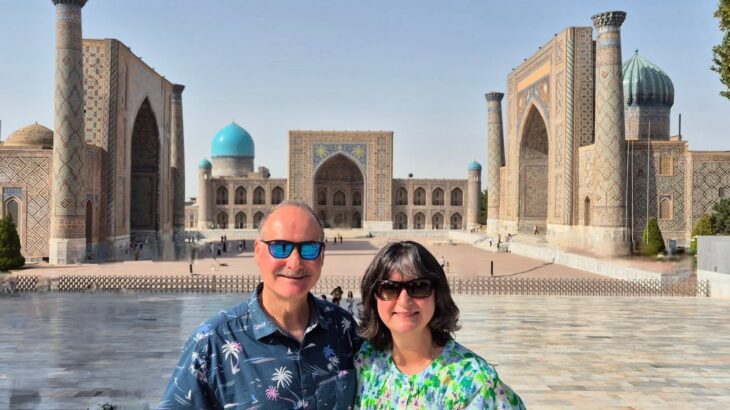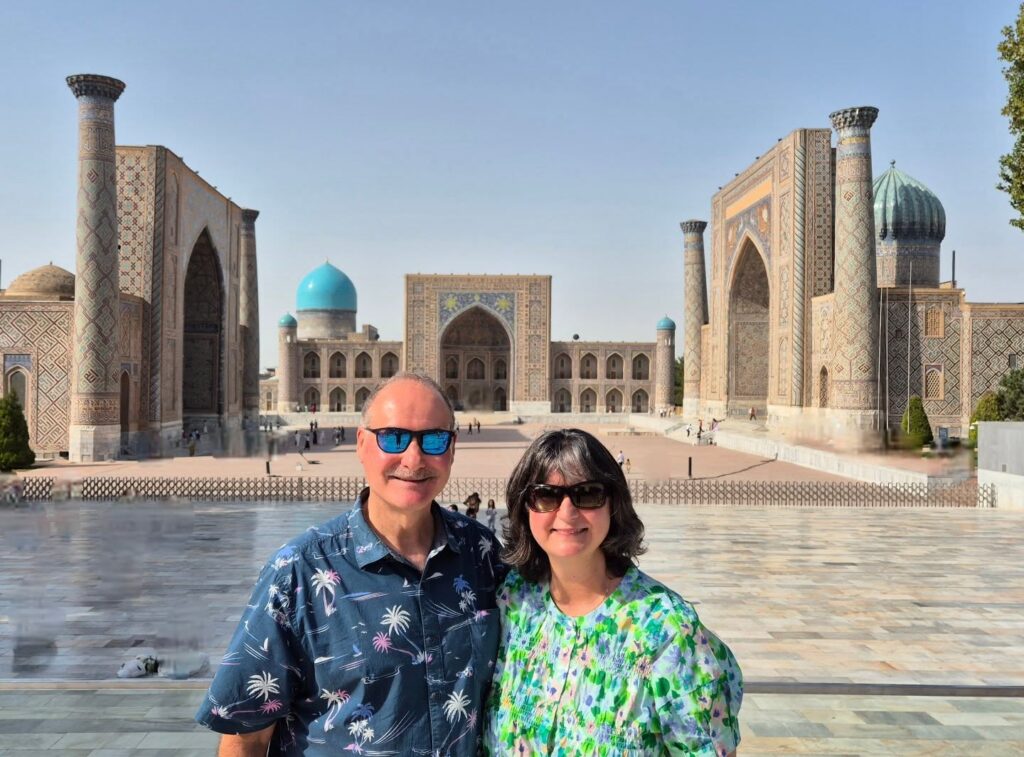
A Journey Through Two Lands of Legend
When Lisa Anthony, Product & Sales Manager at Wendy Wu Tours New Zealand, joined our Road to Samarkand tour, she expected an adventure. What she discovered was a jaw-dropping world of contrasts. From snow-capped peaks and golden deserts to nomadic tradition and glittering Islamic architecture, this is a part of the world where the unexpected waits around every corner.
Kyrgyzstan: Mountains, Eagles and Timeless Traditions
The adventure begins in Bishkek, Kyrgyzstan’s charming capital framed by the Tian Shan Mountains. An early morning gentle hike in Ala Archa National Park introduces the group to crystal clear glacial streams, lush alpine meadows, and pristine mountain landscapes.
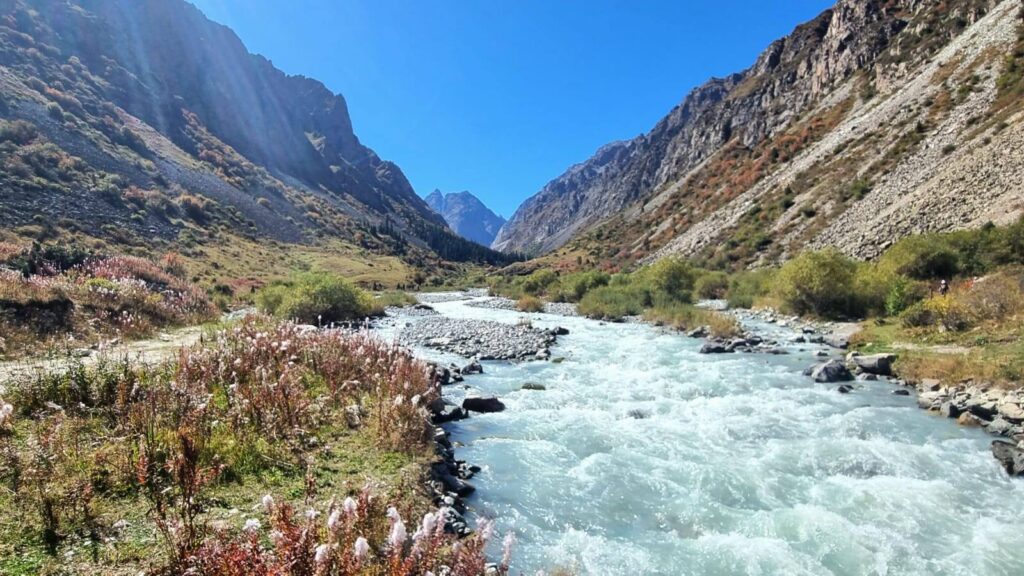
“From the moment we arrived in Bishkek, I felt like we were stepping into another world,” Lisa recalls. “Kyrgyzstan is so clean and green, and the people are incredibly warm and proud.”
From there, the road loops east towards Issyk Kul – the second largest alpine lake in the world, the shores of which have been inhabited since the Bronze Age. Issyk Kul means ‘warm lake’, which may come as a surprise given its lofty mountain locale; however, the lake never freezes thanks to a combination of depth, mineralality and geothermal activity.
After admiring the lake’s mesmerising natural setting and cultural treasures, it was back on the road to the small, remote town of Karakol – the gateway to some of Kyrgyzstan’s most captivating landscapes. An unexpected highlight was the Karakol Sunday Animal Market, where everyone observed traders buying and selling sheep, horses, cows and goats.
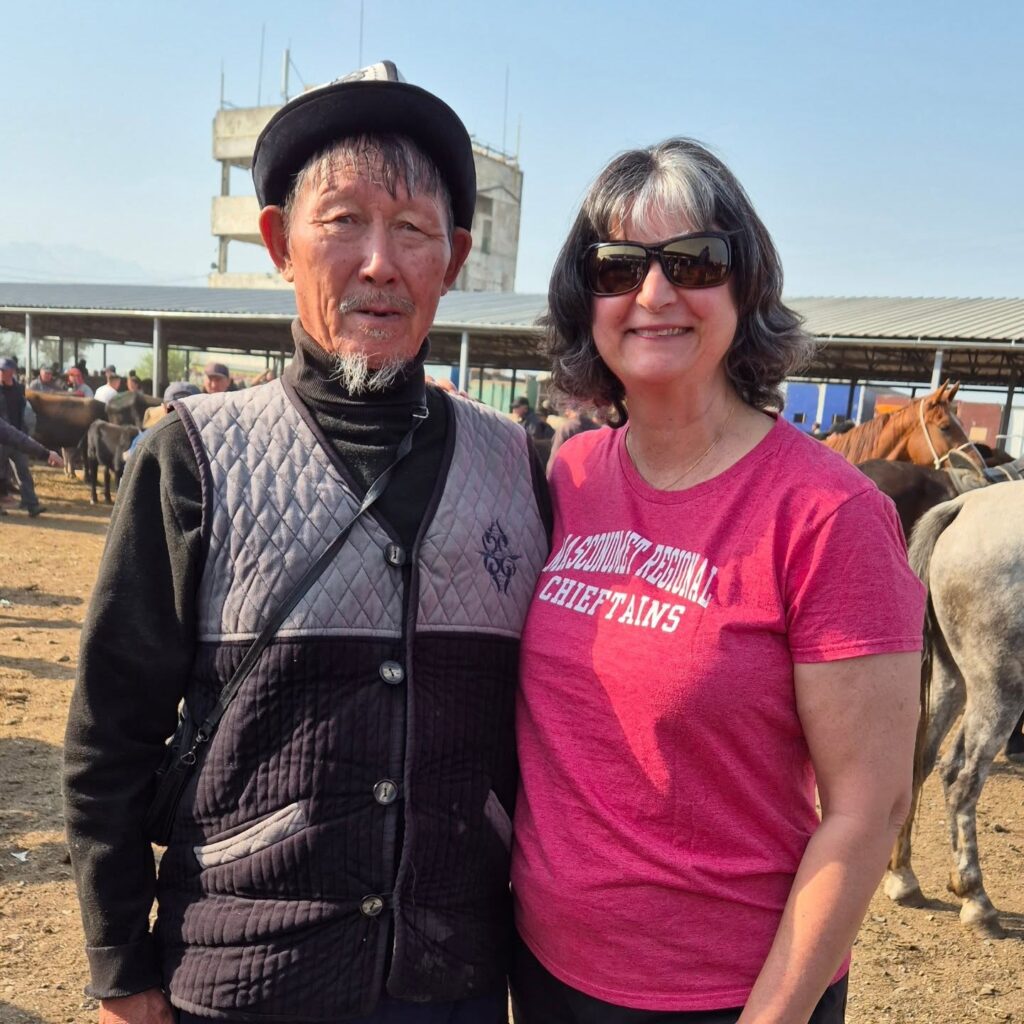
At Bokonbayevo Village, the group met local eagle hunters who still practise the ancient art passed down through generations. Eagle hunting is a revered tradition in Kyrgyzstan wherein golden eagles are trained to hunt smaller animals. Although rural villages no longer rely on this methodology for sustenance, the tradition is carried on to help preserve the Kyrgyz nomadic culture. As Lisa observed, these birds serve as much more than a hunting instrument – the bond between a bird and its owner is sacred and takes years to develop fully.
“I watched one man kiss his eagle for comfort before the demonstration,” Lisa remembers. “There’s such respect between them; it’s a bond for life.”
It was at this point that Lisa really pondered the incredible diversity and contrasts of this unique corner of the world. “Every day brought a new landscape and a new story,” she reflects. “One morning, we were hiking in Semenov Gorge near Karakol; that afternoon, I was holding a 20-kilo eagle on my arm!”
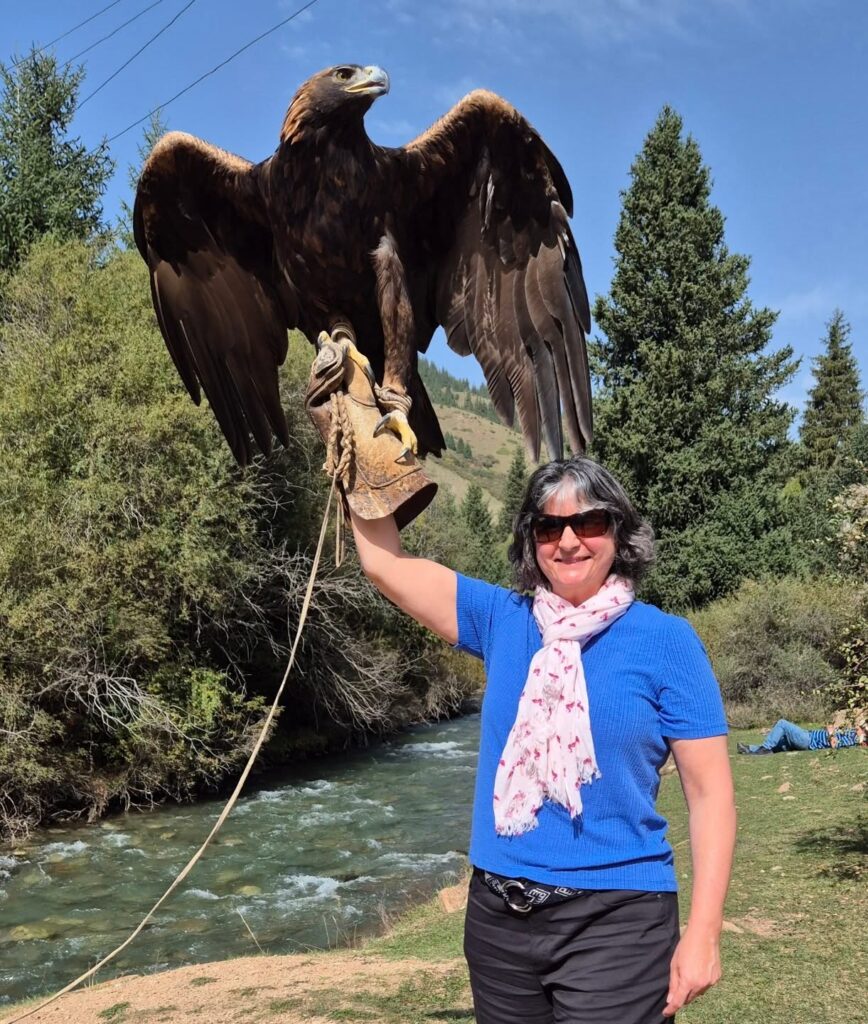
Meals in Kyrgyzstan are often shared in family homes or traditional yurts, where guests are welcomed like long-lost friends. “One family builds yurts for a living,” Lisa explains. “They handcraft every wooden frame and felt covering. It’s extraordinary craftsmanship, and the food inside was just as memorable.”
The landscape turns wilder as the journey winds south to Tash Rabat Caravanserai, a 15th-century stone fortress tucked in a quiet valley at 3,200 metres. This caravanserai is one of the best preserved on the old Silk Road from China to Istanbul.
“Tash Rabat took my breath away,” Lisa says. “The stillness, the history, you could almost hear the echo of traders and monks who once passed through.”
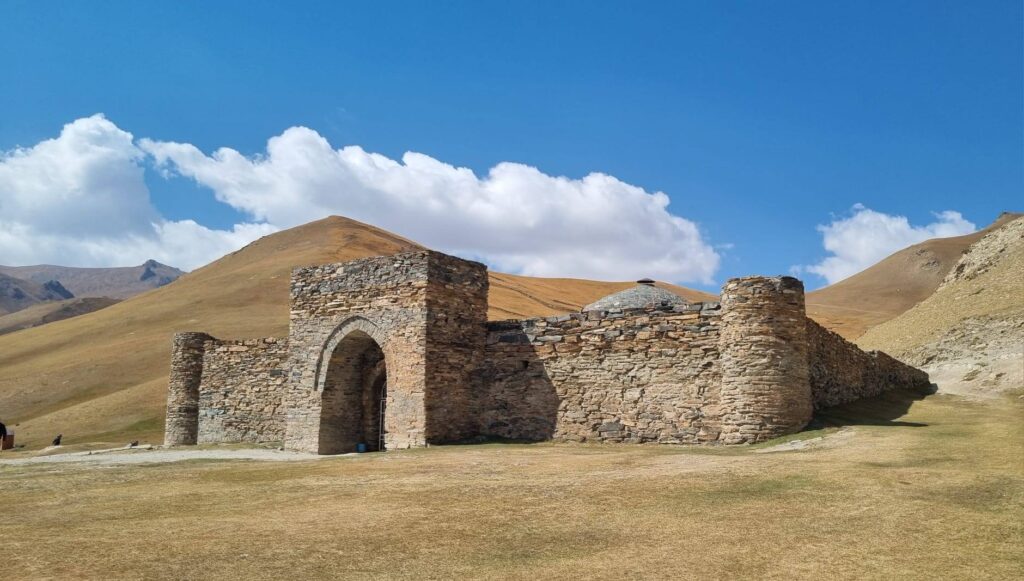
Crossing into Uzbekistan: The Jewel of the Silk Road
Leaving the high passes behind, the group crosses into Uzbekistan, where turquoise domes replace green pastures and the scent of baked bread drifts from bustling bazaars.
“The contrast was incredible,” Lisa says. “Uzbekistan feels more Persian and Turkish in its design and food: elegant mosques, ornate tiles, and spices everywhere.”
In Tashkent, the group explored the Tila Shaikh Mosque, home to one of the oldest known copies of the Quran (written on deer skin), before wandering through Chorsu Bazaar, a kaleidoscope of colour and sound.
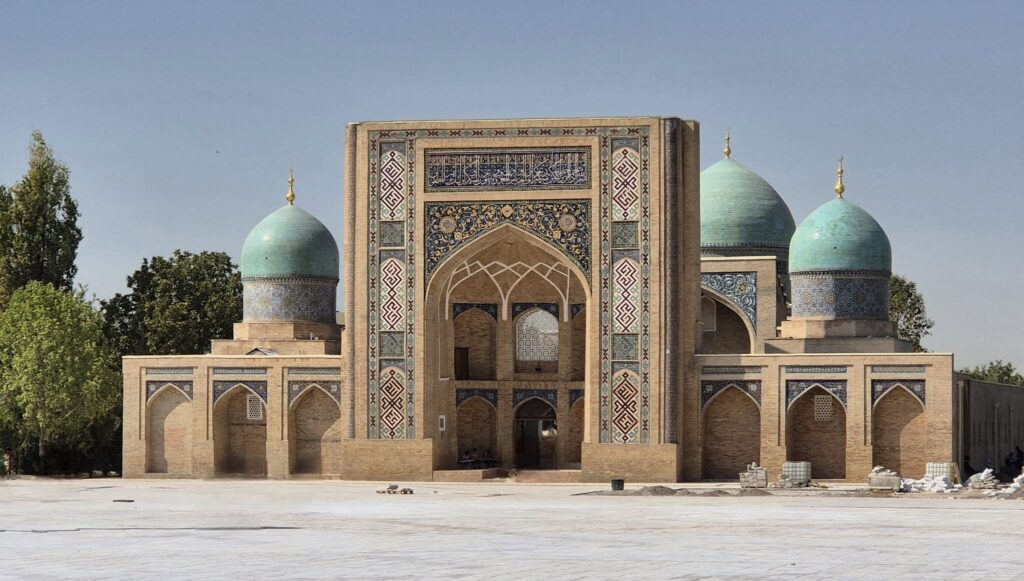
Samarkand: The Beating Heart of the Silk Road
Few destinations capture the imagination quite like Samarkand, a city that once sat at the crossroads of empires. Located between Uzbekistan’s vast deserts and the High Pamir mountain range, Samarkand has been continuously inhabited for more than 2,700 years. During that time, many of history’s most notorious characters have wandered its streets, including Alexander the Great, Genghis Khan and Marco Polo. Its centrepiece, Registan Square, glitters with majolica tiles in every shade of blue.
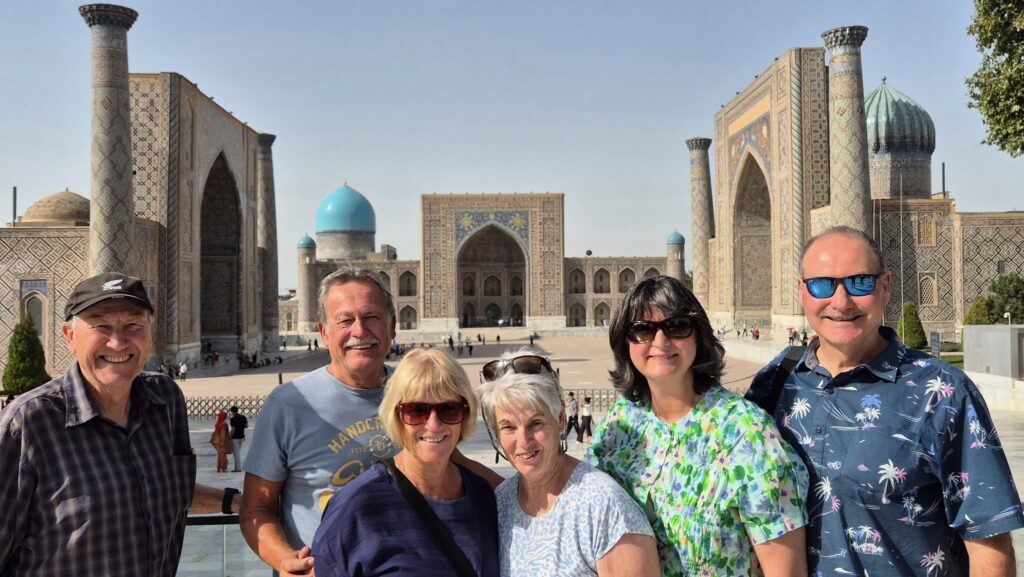
“Registan Square is up there with the Taj Mahal and Kyoto’s Golden Pavilion,” Lisa enthuses. “The craftsmanship is exquisite – it feels like standing inside a jewel.”
Visits to the Mausoleum of Tamerlane, Ulugbek’s Observatory, and the Shahi Zinda Necropolis reveal the depth of history layered within the city. For Lisa, Shahi Zinda was a personal favourite:
“The turquoise mosaics shimmer in the sunlight; it’s just magic. You can almost picture traders, poets, and kings walking those same lanes.”
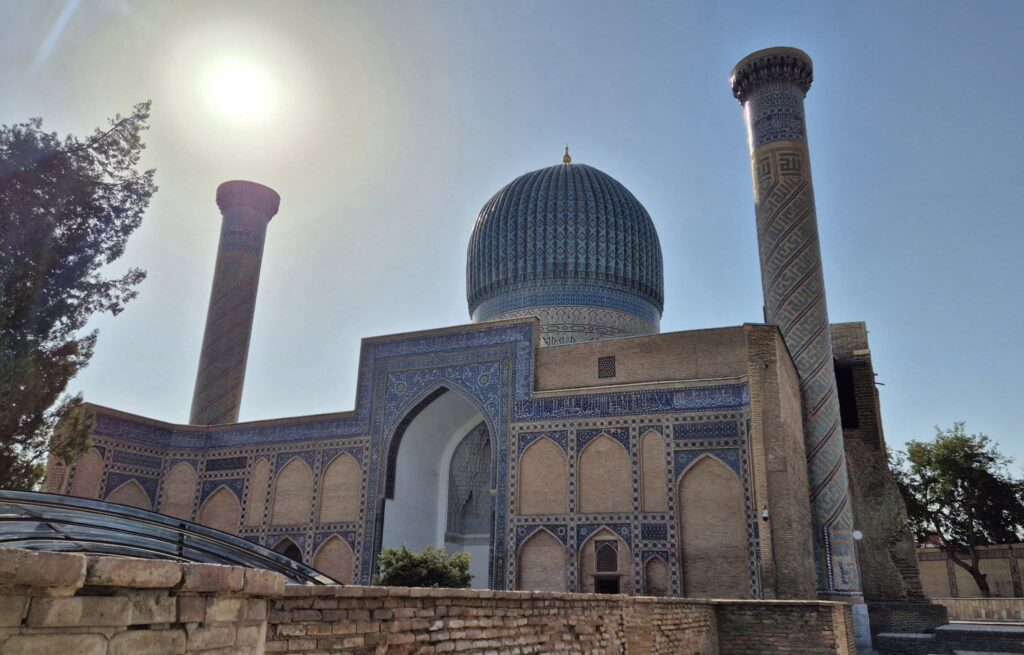
In nearby Shakhrisabz, birthplace of Amir Temur (Tamerlane), she found herself standing in a moment of living history.
“I realised I was standing where Alexander the Great once married,” she says. “It gave me goosebumps.”
Evenings in Samarkand bring cool desert evenings, cultural encounters and feasts beneath the stars. “Dinner at a local family home, learning to make plov, it’s one of those ‘pinch me’ experiences,” Lisa smiles. “Every meal exceeded expectations.”
Bukhara and Khiva: Cities of Sand and Spirit
Travelling west, the road unravels towards Bukhara, one of Central Asia’s most holy cities. Bukhara rises out of the desert sands like a mirage – an ancient masterpiece, adorned with turquoise domes and maranets. A UNESCO World Heritage Site, exploring this legendary city is like stepping into a living museum.
“Bukhara stole my heart,” Lisa admits. “It’s serene and spiritual, with 350 mosques and 100 madrassahs, once the centre of culture and religion on the Silk Road.”
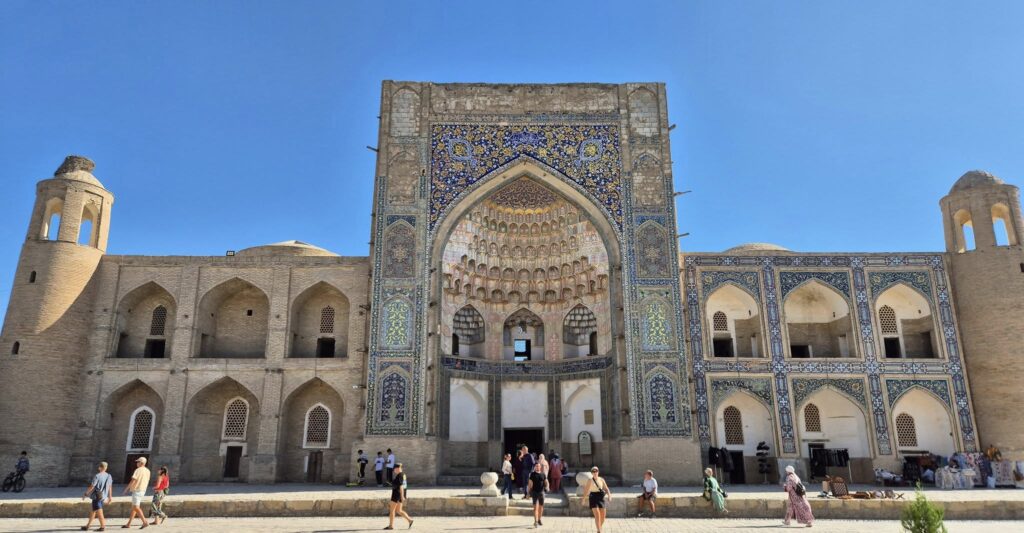
The group wandered through the Kalon Minaret, Emir’s Summer Palace, and Bahauddin Naqshbandi Mausoleum before dining with a local miniature painter in his studio.
The grand finale awaited in UNESCO-listed Khiva, with its soaring city walls and warren-like alleyways, reached after a long drive across the Kyzyl Kum Desert. The city’s ochre walls and blue-tiled towers shine like an azure oasis in the distance.
“Khiva felt frozen in time,” Lisa says. “We explored palaces, mosques and even the harem labyrinth. That night, we dined outdoors beside the minaret as musicians played. Pure magic.”
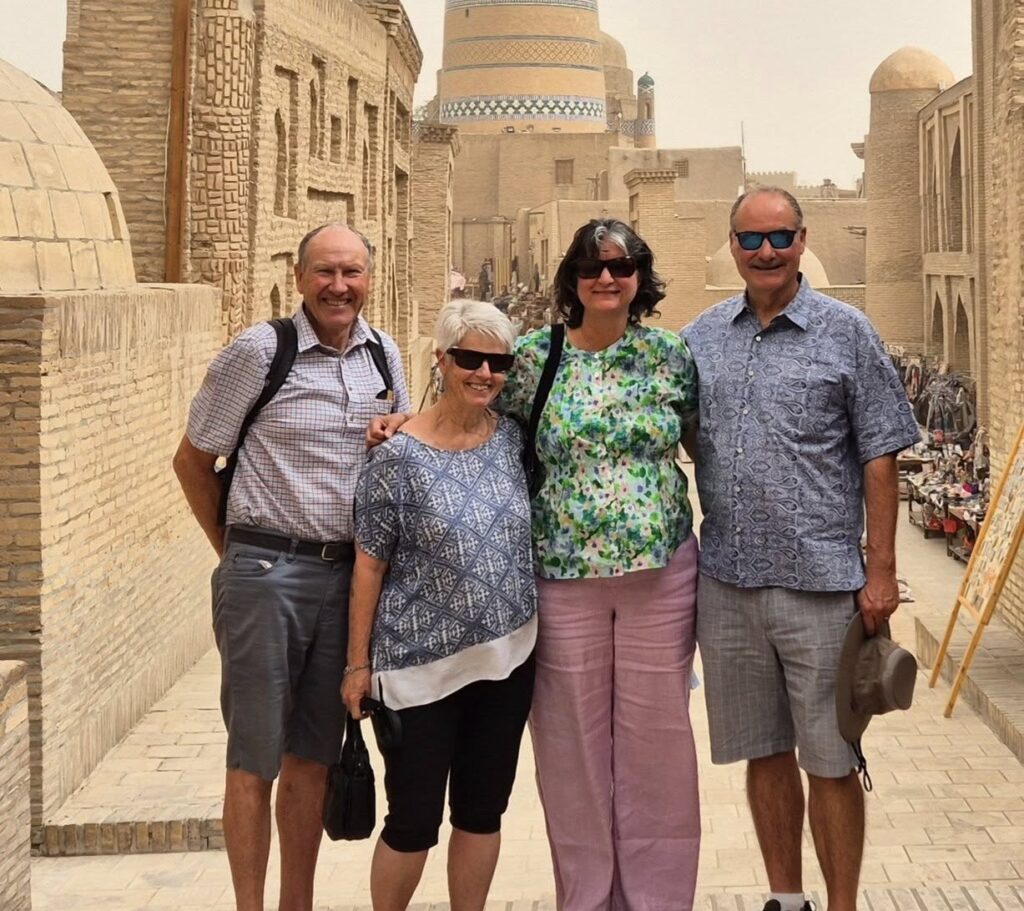
A Journey of Connection and Wonder
After 23 days tracing the Silk Road from the mountains of Kyrgyzstan to the deserts of Uzbekistan, Lisa returned home transformed.
“Central Asia blew me away,” she reflects. “The scenery, the people, the food – every day offered something new. It’s the perfect trip for anyone who’s seen Asia’s classics and wants something truly different.”
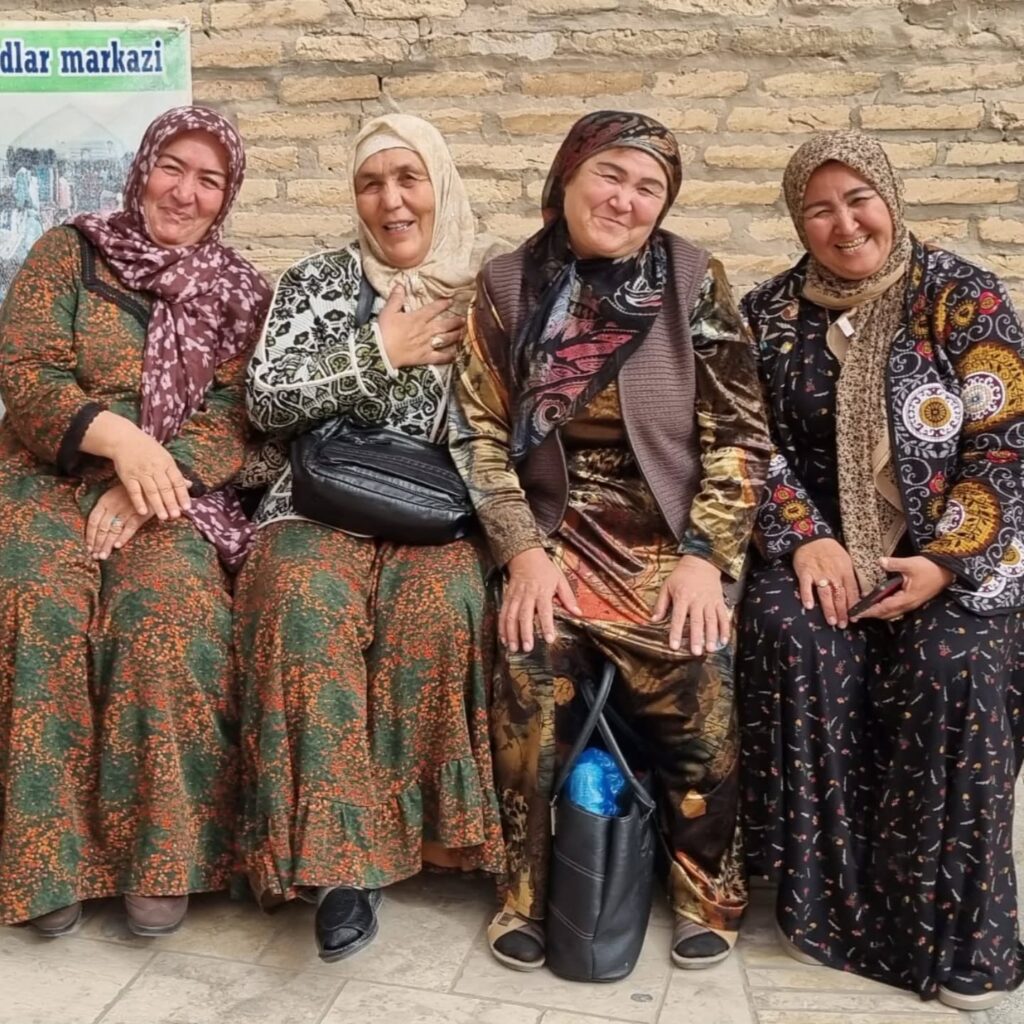
Follow the Road to Samarkand
Experience your own epic Central Asia tour on the Road to Samarkand, a fully inclusive 23-day journey through Kyrgyzstan and Uzbekistan, rich with culture, history, and discovery.
From the tranquil shores of Issyk Kul to the dazzling domes of Samarkand, follow in the footsteps of Silk Road traders, and uncover a world few travellers have seen.
